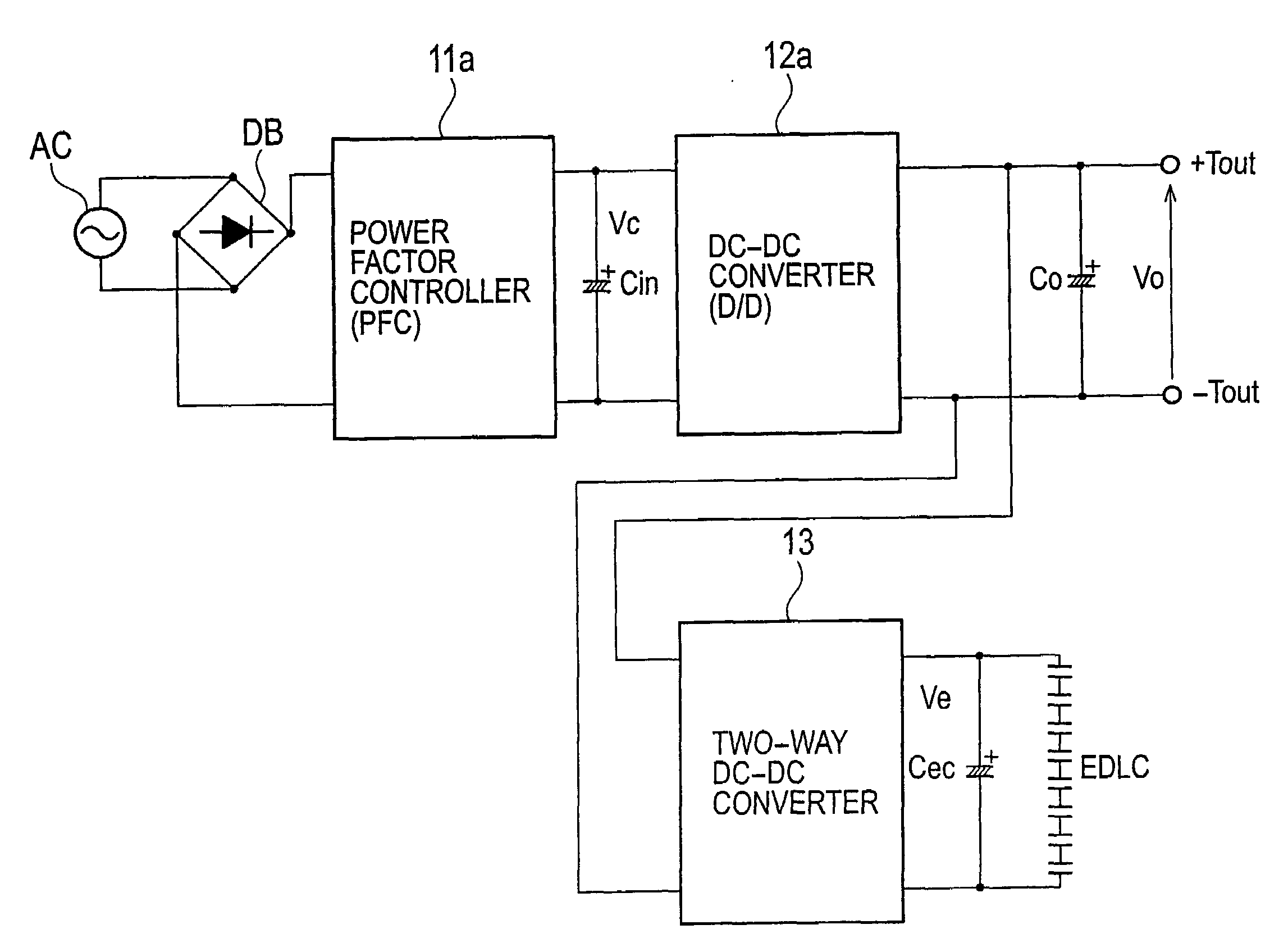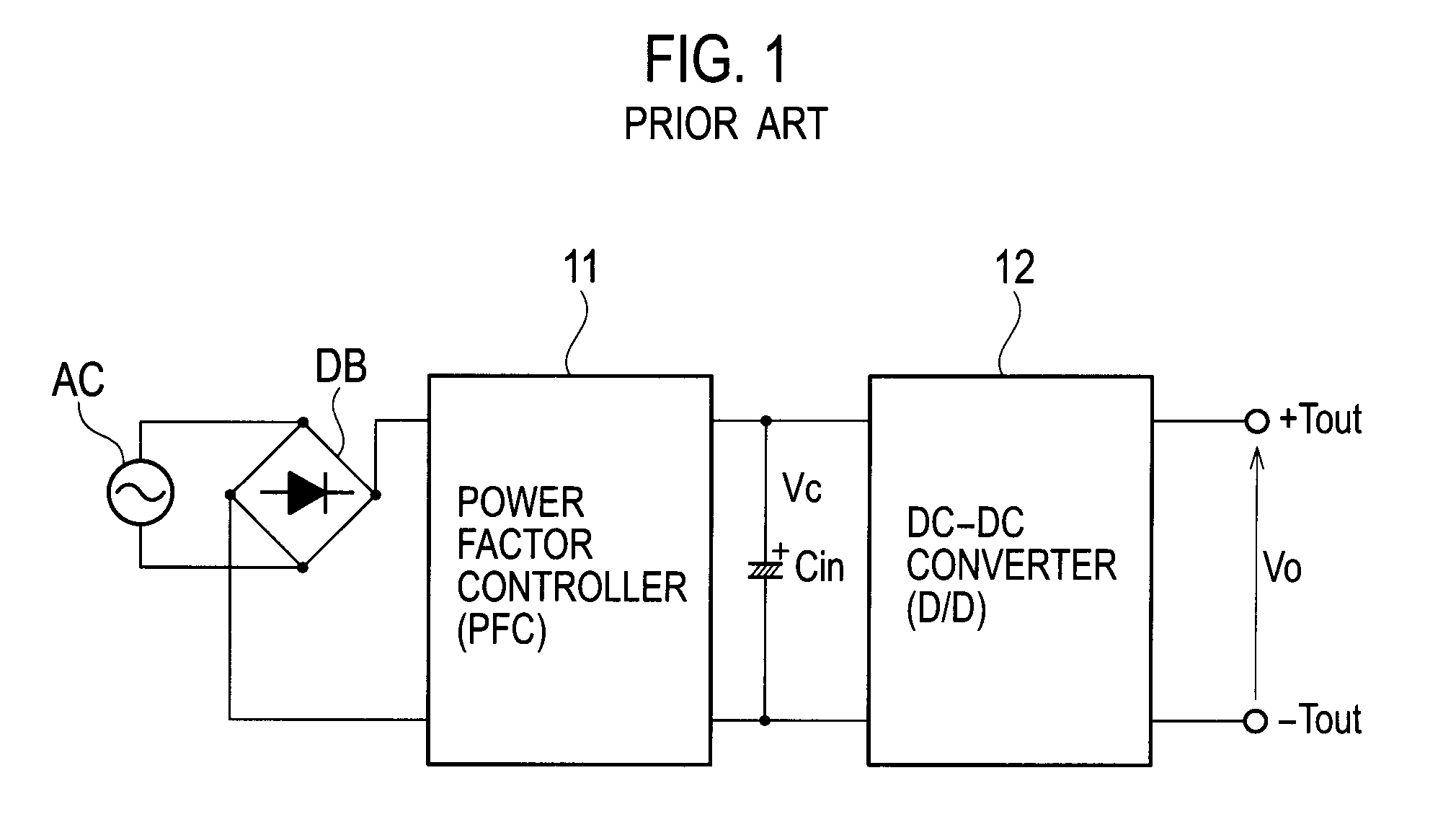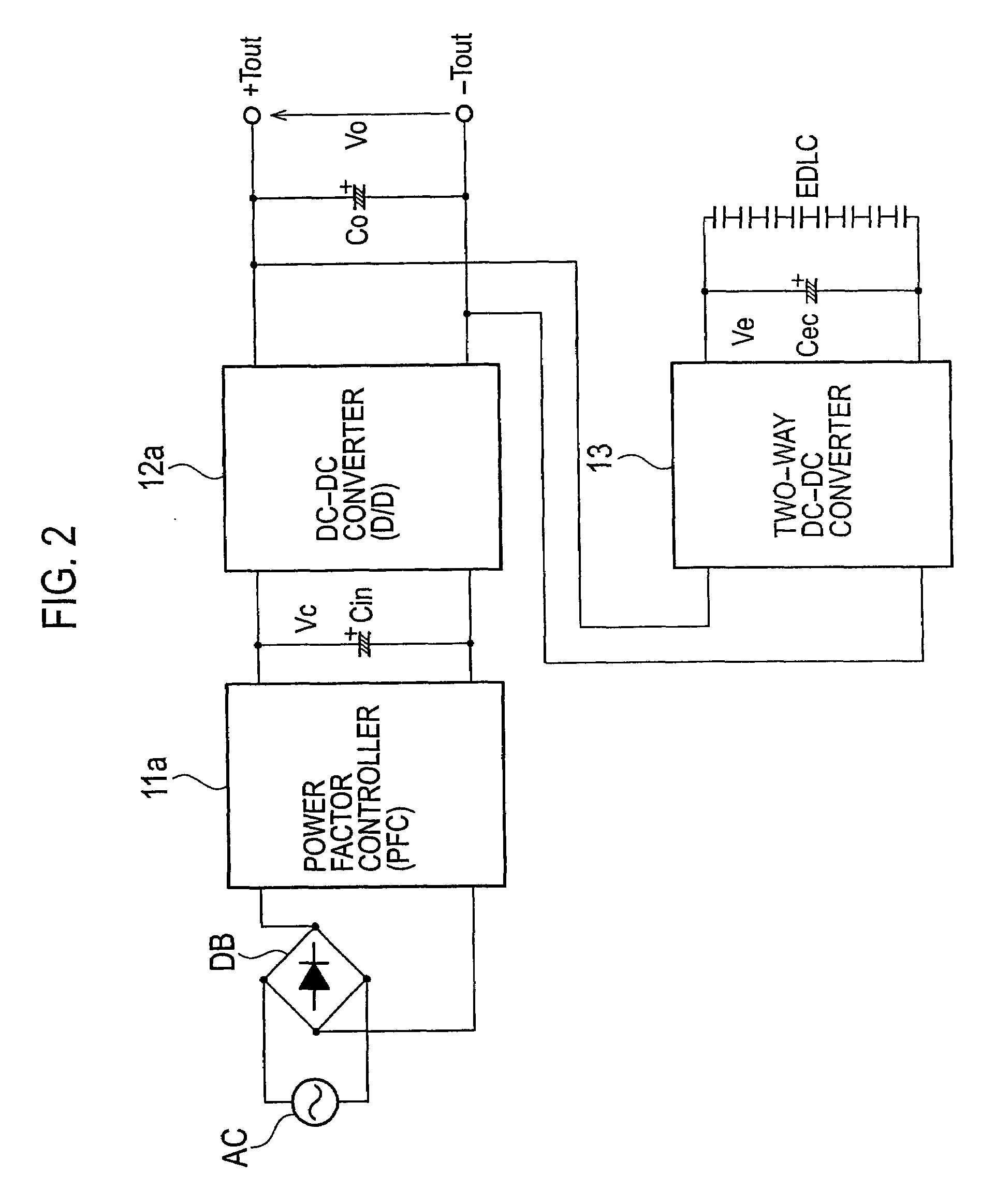Ac-dc converter
a converter and converter technology, applied in the direction of electric variable regulation, process and machine control, instruments, etc., can solve the problems of limiting the improvement of conversion efficiency of the power unit, the electric power consumption of the high-speed printer is apt to increase, and the conventional ac-dc converter cannot cope with a load exceeding 1282, so as to achieve a higher peak power
- Summary
- Abstract
- Description
- Claims
- Application Information
AI Technical Summary
Benefits of technology
Problems solved by technology
Method used
Image
Examples
first embodiment
[0025]FIG. 2 is a view showing the constitution of an AC-DC converter in accordance with the present invention. Note, elements identical to constituents of the conventional AC-DC converter of FIG. 1 are indicated with the same reference numerals respectively and further, their overlapping descriptions are eliminated.
[0026]Besides the constituents of the conventional AC-DC converter of FIG. 1, the AC-DC converter of the first embodiment further includes an output capacitor Co, a two-way DC-DC converter 13, a smoothing capacitor Cec and an electric double layer capacitor EDLC. Again, the AC-DC converter includes a power factor controller 11a and a DC-DC converter 12a in place of the power factor controller 11 and the DC-DC converter 12 of the conventional converter, respectively.
[0027]The output capacitor Co is connected between output terminals of the DC-DC converter 12a. Both ends of the output capacitor Co are connected to output terminals +Tout, −Tout and also connected to input / o...
second embodiment
[0048]As mentioned above, according to the present invention, the AC-DC converter can accomplish a high conversion efficiency with the realization of zero-current switching and zero-voltage switching.
embodiment
3rd. Embodiment
[0049]According to the third embodiment of the present invention, the two-way DC-DC converter 13 of the first embodiment shown in FIG. 2 is embodied by a different circuit from that of the second embodiment.
[0050]FIG. 6 is a block diagram showing the constitution of the AC-DC converter of the third embodiment. Note, constituents identical to those of the AC-DC converter of the first embodiment are indicated with the same reference numerals and their descriptions are eliminated. We now explain differences from the first embodiment, that is, only the constitution of the two-way DC-DC converter 13a.
[0051]The two-way DC-DC converter 13a is formed by a boost type chopper circuit comprising a switching element Q1, a switching element Q2 and a reactor L. That is, the switching element Q1 and the switching element Q2 are connected in series between the first input / output terminals of the two-way DC-DC converter 13a. In the switching element Q1, one terminal forms one of the ...
PUM
 Login to View More
Login to View More Abstract
Description
Claims
Application Information
 Login to View More
Login to View More - R&D
- Intellectual Property
- Life Sciences
- Materials
- Tech Scout
- Unparalleled Data Quality
- Higher Quality Content
- 60% Fewer Hallucinations
Browse by: Latest US Patents, China's latest patents, Technical Efficacy Thesaurus, Application Domain, Technology Topic, Popular Technical Reports.
© 2025 PatSnap. All rights reserved.Legal|Privacy policy|Modern Slavery Act Transparency Statement|Sitemap|About US| Contact US: help@patsnap.com



